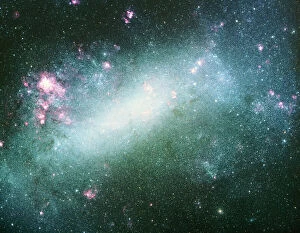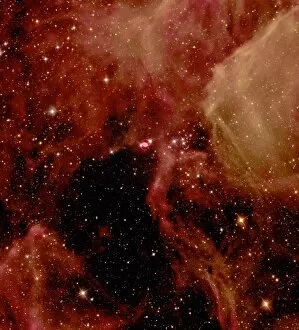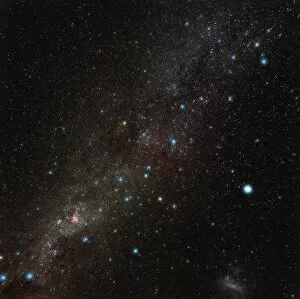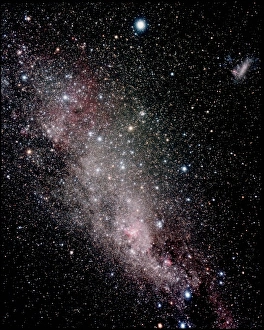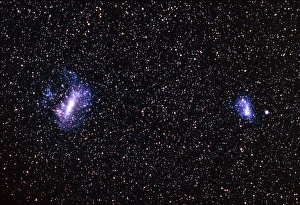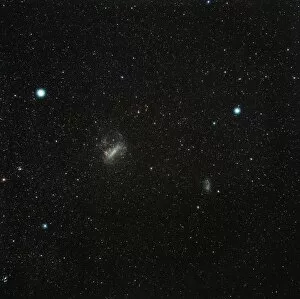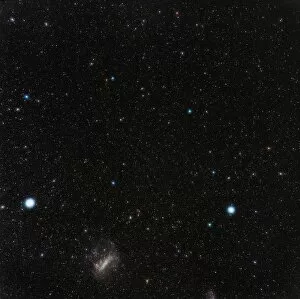Large Magellanic Cloud Collection
The Large Magellanic Cloud, a stunning celestial spectacle located in the Carina constellation, is an astronomical wonder that never fails to captivate our imagination
All Professionally Made to Order for Quick Shipping
The Large Magellanic Cloud, a stunning celestial spectacle located in the Carina constellation, is an astronomical wonder that never fails to captivate our imagination. With its vast expanse and breathtaking beauty, this galaxy has become a source of fascination for astronomers and stargazers alike. One of the most remarkable features within the the Supernova remnant N132D. This awe-inspiring phenomenon, captured in an X-ray image, showcases the remnants of a massive stellar explosion that occurred thousands of years ago. It serves as a reminder of the immense power and destructive force present in our universe. In contrast to this explosive display, an optical image reveals the ethereal beauty of the Large Magellanic Cloud itself. Its intricate structure and vibrant colors paint a mesmerizing picture against the backdrop of space. The Tarantula Nebula, depicted in a composite image within this galactic masterpiece, adds another layer of intrigue with its brightly glowing plumes reminiscent of an underwater scene. Further exploration into this cosmic marvel leads us to Nebula NGC 1760 - yet another captivating sight captured through optical imaging. Its delicate tendrils stretch across space like wisps of smoke illuminated by distant stars. These celestial wonders showcase nature's ability to create extraordinary works of art on unimaginable scales. As we zoom out from these individual wonders within the Large Magellanic Cloud, we are greeted by an even grander view - one that encompasses not only our own Milky Way but also surrounding dwarf galaxies. This perspective allows us to appreciate just how interconnected our universe truly is. From Earth's vantage point in the Southern hemisphere, we are fortunate enough to witness firsthand this majestic display painted across our night sky. As we gaze up at it with wonderment and awe, let us remember that there is still so much left unexplored beyond what meets our eyes.


